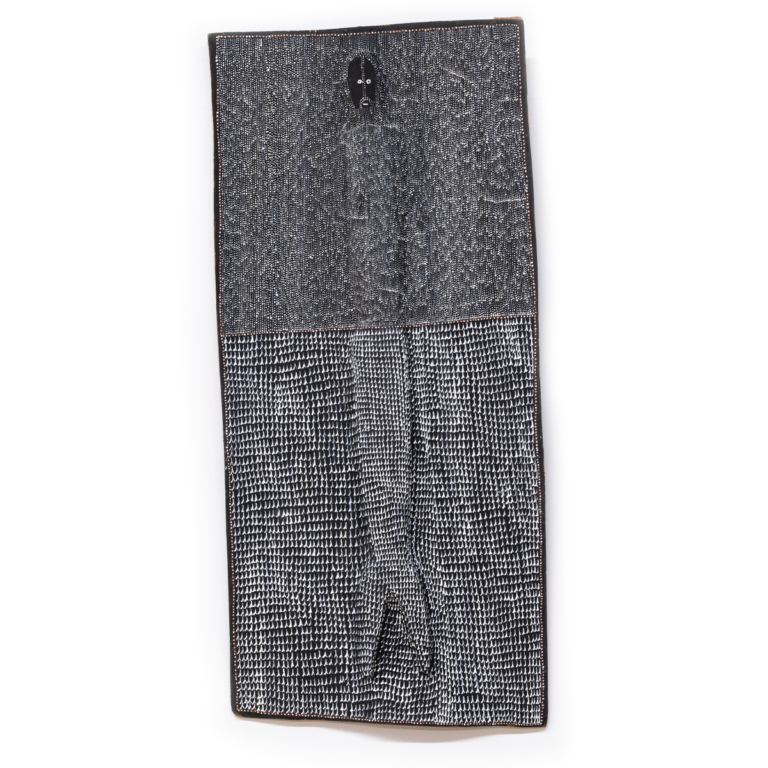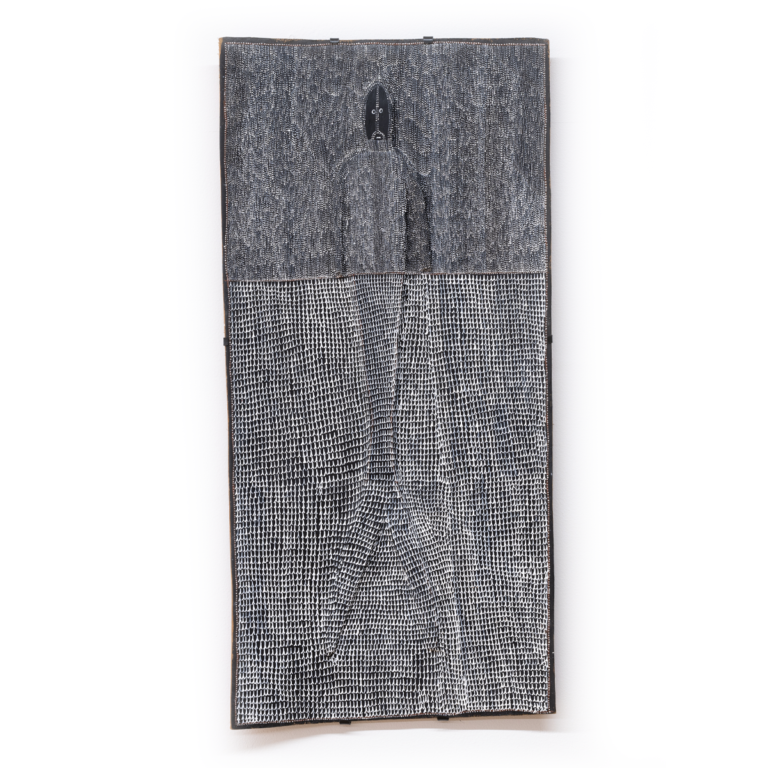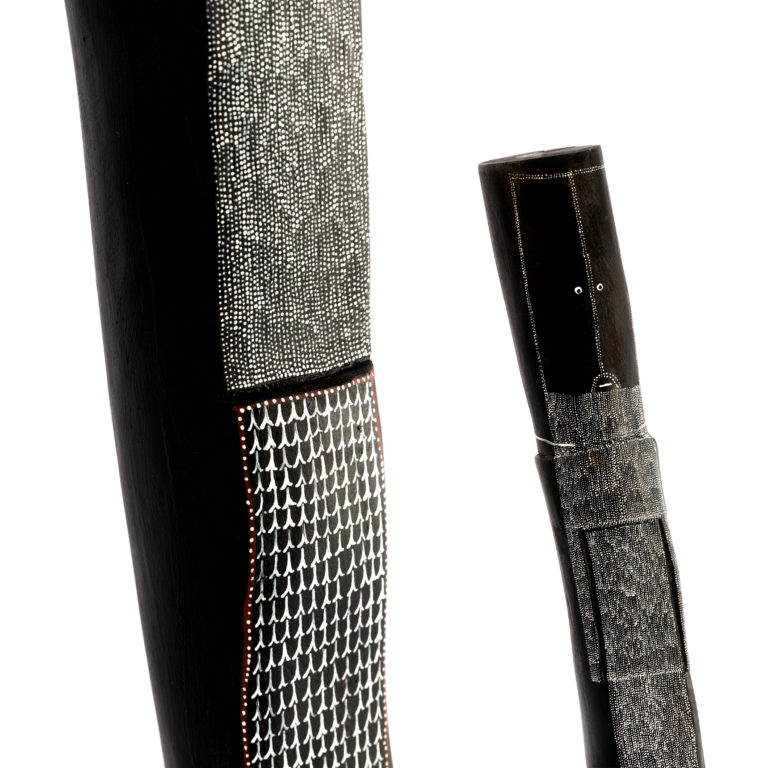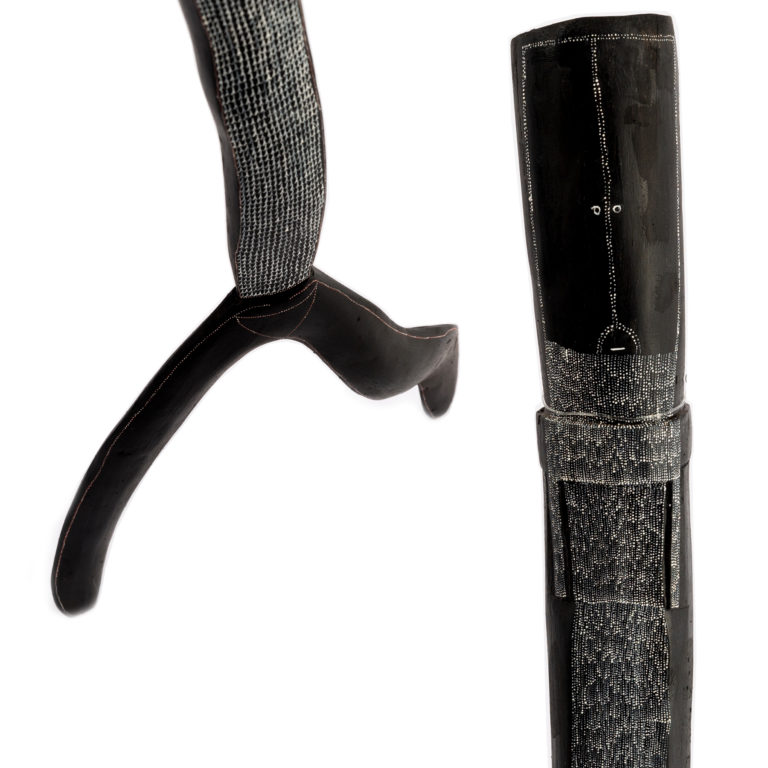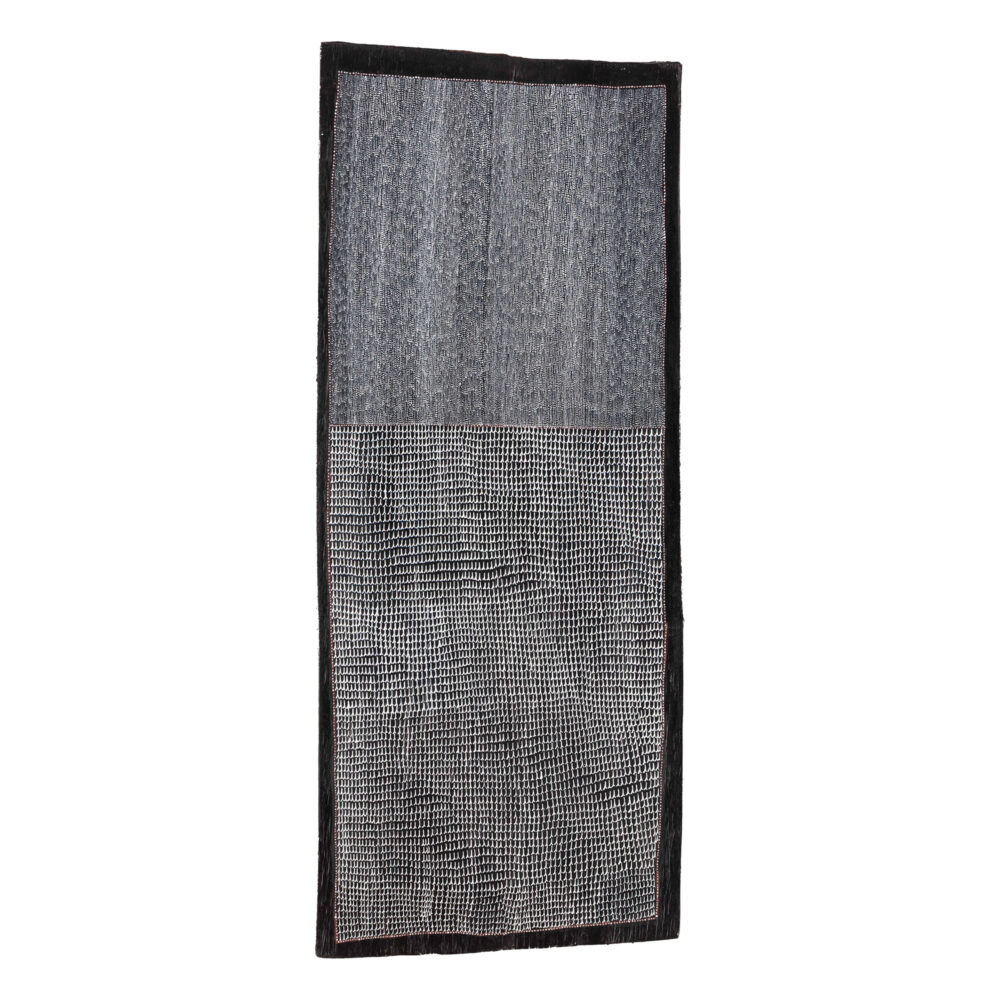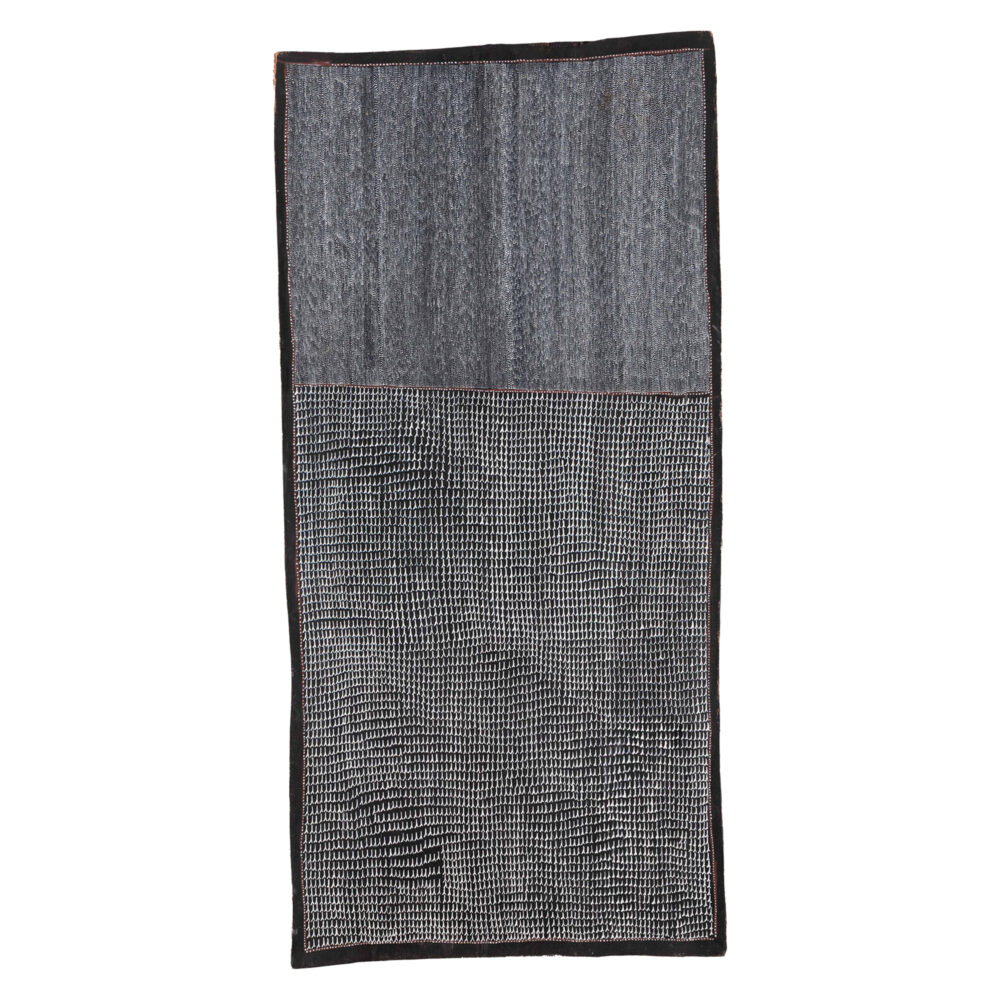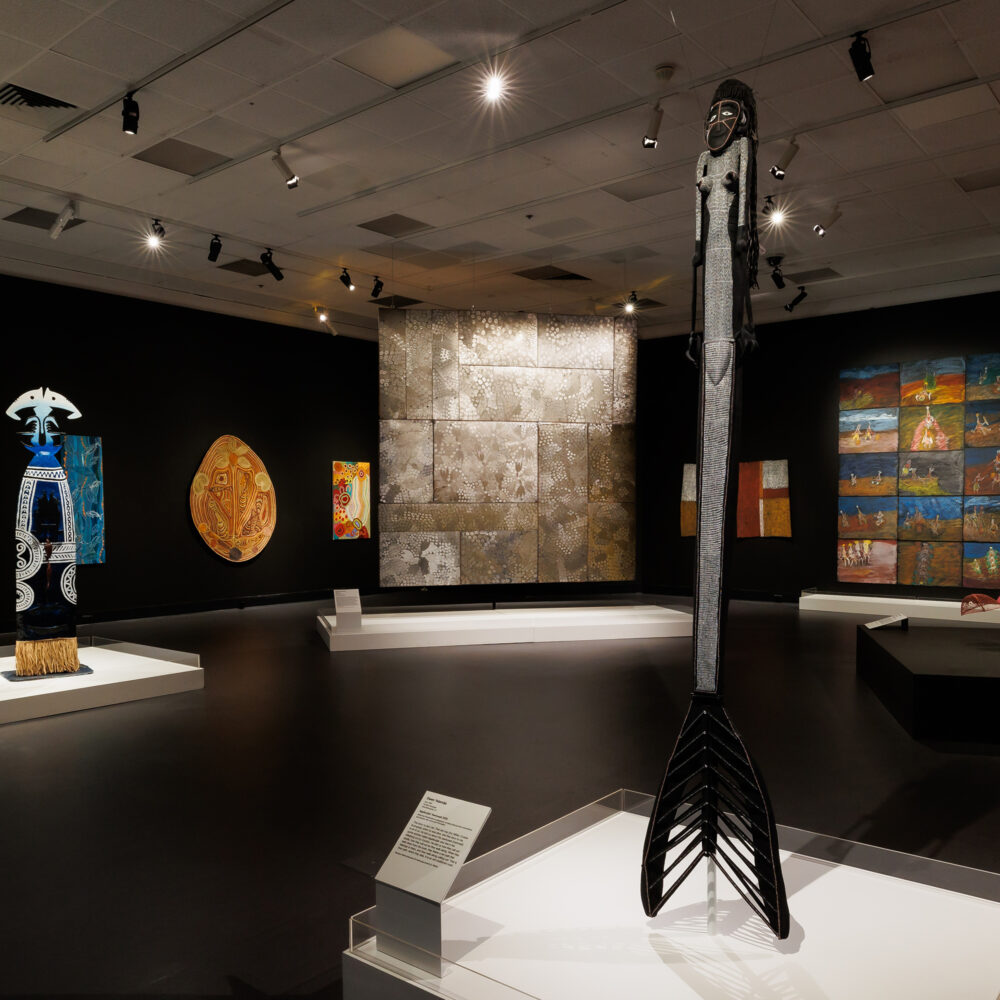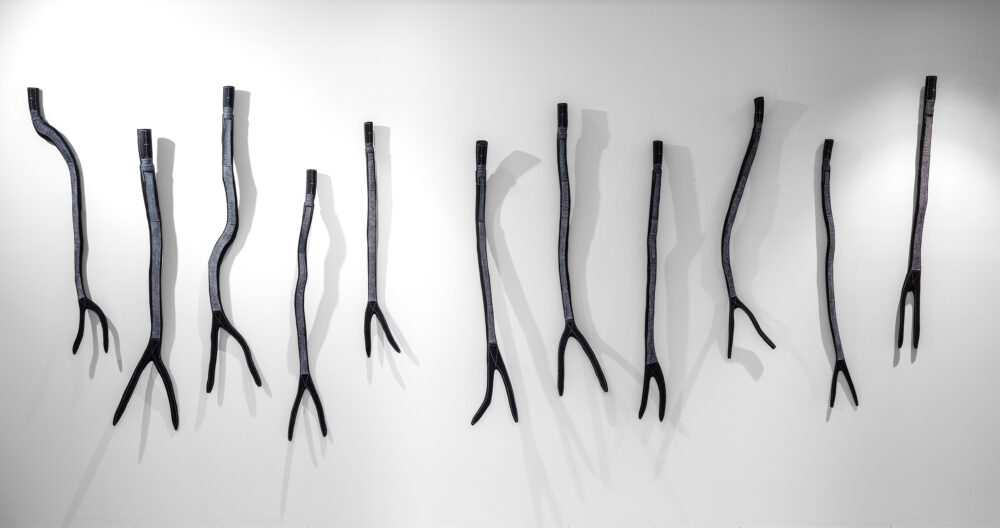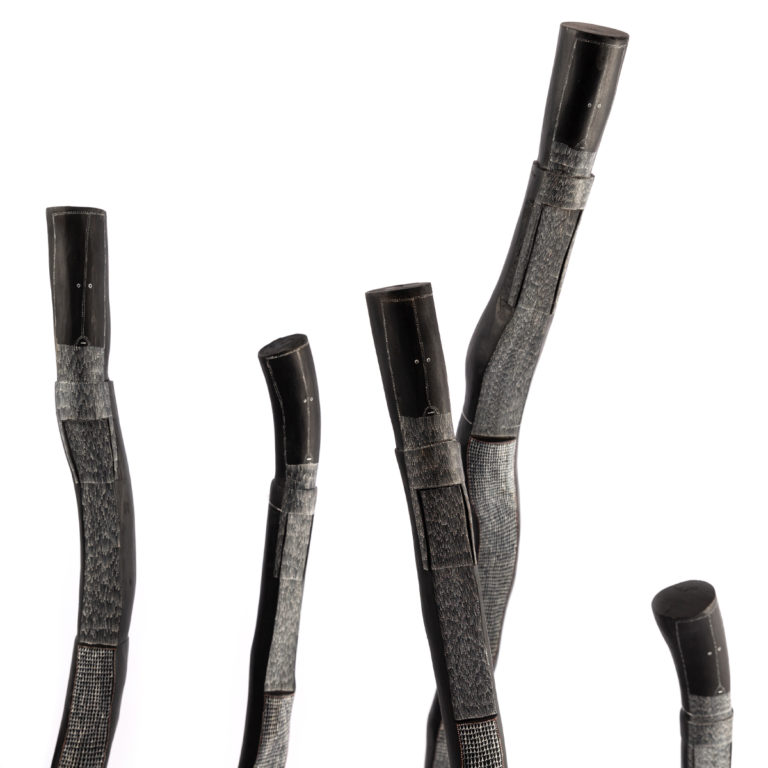Owen Yalandja
Adorned in thousands of cascading painted water droplets, and delicately scalloped fish scales, Owen Yalandja’s Yawkyawk figures are exquisite. Yalandja’s repertoire is almost exclusively concerned with three dimensional representations of yawkyawk spirits.
Yawkyawk are young female spirits which live in and around waterways, their shadows can occasionally be seen as they flee the smell of humans who approach the water. They are imagined to have been girls who transformed into mermaid-like figures with fish tails.
As a senior member of the Dangkorlo clan, Kuninjku artist Owen Yalandja is the current custodian of a sacred yawkyawk site. For artists and non-artists of the Dangkorlo clan, yawkyawk djang (dreaming) is integral to community identity.
Owen Yalandja, like his brother Crusoe Kurdaal, had in their youth adopted an artistic legacy bestowed by their father Crusoe Kuningbal, a prominent community leader and artist. Attributed with inventing the first three-dimensional representation of the mimih spirit, Kuningbal’s influence on Yalandja’s carving work is profound.
In 1993, following many years of working closely with his father, Owen Yalandja adapted Kuningbal’s methods and produced his first Yawkyawk sculpture, one that made use of a natural tree branch fork. His preferred medium, the enduring wood of the Kurrajong tree, allowed the artist to consider more complex carvings.
While initially using dot pattern techniques taught by his father, Owen Yalandja’s painting process has been a consistent exercise in developing a unique visual language. A pivotal moment was the decision to paint on black backgrounds, which was followed by pronounced arcs and scale-like v-shapes. Interlaced with these innovative visual departures are remnants of Kuningbal’s dot pattern teachings, which can still be seen in Yalandja’s work today.
Applied in gradients and with surgical precision, the painted surface of Owen Yalandja’s works warrant their wide acclaim. For over two decades Owen Yalandja has been broadly acknowledged as one of Australia’s most influential painters and sculpturs. His artistic contributions have been generously documented, internationally recognised and have been known to command high levels of academic and commercial attention.
Although unquestionably beautiful and certainly striking, what mostly underpins Yalandja’s influence is the revelation of multi-generational learning that is present in his work.
Owen Yalandja was recently announced as a Finalist in the 2025 Telstra National Aboriginal and Torres Strait Islander Art Awards (NATSIAA), the longest running Aboriginal and Torres Strait Islander art award and richest art award in the country.

